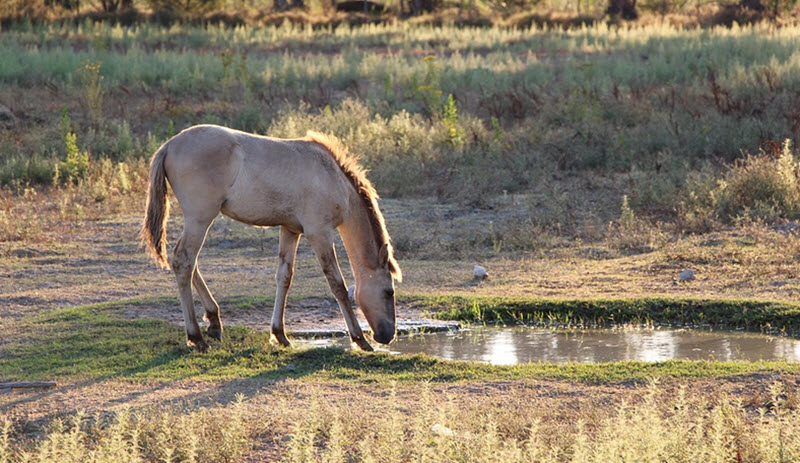The Sorraia is thought to be the last remnant of wild horses that lived across most of the Iberian Peninsula, including parts of Spain & Portugal. Although we call them a breed today, they are actually what remain of an indigenous wild horse. Only recently, after the Portuguese National Stud took over registration of these animals, have they been promoted as a breed.

History
It is thought that Sorraia animals were among the first to be taken to the Americas by Spanish as they were adaptable, hardy and useful as pack animals. Many of the breeds from the Americas have grulla coloring & primitive markings. This breed is also believed to have migrated across the land-bridge of Gibraltar to North Africa in ancient times; and is thought to be the basis for the hardy North African Barb. However important their genetics are, this is a very rare breed. There are small numbers of dedicated breeders in both Portugal and Germany, but their numbers are dangerously
Description
- Neck is long & slender
- Back is average in length & straight
- Chest is deep & narrow
- Legs are long and well built
- Hooves are dark
- Head often has convex profile
- Eyes are high set
- Ears are long
Breed History
The Sorraia actually descends from farm horses thought to resemble those horses which were collected for a breeding program in 1937. All Sorraia descend from four stallions and seven mares of local farm horses, to which a Criollo stallion was added later on.
Range
Sorraia-type mustangs have been found in Herd Management Areas (HMA) of the Bureau of Land Management (BLM), and also among horses bred within “mustang” registries, like the SMR and SSMA.
These registries register horses that trace back to mustang ancestors, but have been bred under domestic conditions for generations. Technically, the only difference between a mustang and a domestic horse is that the mustang lives wild, therefore, as soon as such a horse is back under domestic conditions, it stopped being a mustang. The mustang registries aim at preserving the qualities of the mustang however, that is only possible under wild or nearly wild conditions.
Summary
It is evident that the Sorraia breed is a domestic horse breed. In my personal opinion, the Sorraia and Lustano as much as similar mustangs like Kiger, Sulphur, and Pryor might all derive from a historic domestic breed of horses with an appearance very similar to their modern counterparts, which is inferred by their very similar phenotype and also genetic similarities.